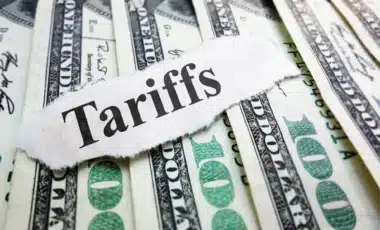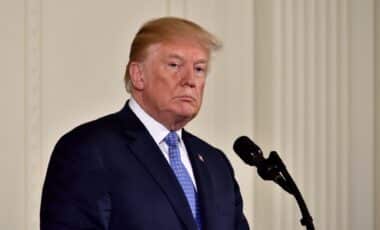In a bold move that contrasts with his ongoing efforts to trim federal spending, President Donald Trump has promised to raise the U.S. military budget to $1 trillion in the fiscal year 2026.
The announcement, made during a meeting with Israeli Prime Minister Benjamin Netanyahu, marks a significant leap from this year’s $892 billion budget.
While Trump has long expressed a desire to reduce the federal deficit, this proposed increase could complicate his administration’s broader fiscal goals.
The president’s pledge to boost military spending is set against the backdrop of a broader push by his administration to streamline federal agencies and cut unnecessary expenses, particularly through the newly established Department of Government Efficiency (DOGE).
A Strategic Shift in Military Funding
President Trump’s announcement of a $1 trillion military budget is a bold departure from his earlier remarks about the need for reductions in military spending.
In February, the president suggested the U.S. could negotiate with Russia and China to halve their defence budgets. However, the proposed 12 percent increase in the military budget for 2026 signals a shift towards further strengthening the U.S. military.
Speaking at the White House, Trump remarked that the increase would be funded, in part, through savings realised by the DOGE project. This new department is designed to make government operations more efficient and redirect those savings into areas like defence, innovation, and modernization efforts.
According to Defence Secretary Pete Hegseth, the focus is on “lethality and readiness,” ensuring the military remains at the forefront of global power dynamics.
The increase comes at a time when each branch of the U.S. military is being asked to reduce spending by 8 percent annually over the next five years. These cuts are intended to fund modernization initiatives aimed at improving military capabilities for future conflicts.
The Balance Between Military Spending and Fiscal Responsibility
While the proposal for a $1 trillion military budget has drawn attention, it could also complicate the Trump administration’s other fiscal goals. According to reports, the administration’s broader push to reduce the national deficit could be undermined by such a large increase in military spending.
Efforts to reduce spending in other government sectors, such as the Social Security Administration and the National Institutes of Health, could be at odds with the funding commitment to the Department of Defence.
Additionally, the Pentagon is looking to reduce its overall personnel and consolidate military bases globally, all in a bid to streamline operations and cut costs.
While Trump has suggested direct talks with Iran could be in the offing, the broader implications of these military commitments remain to be seen, particularly as the U.S. continues to grapple with both national security concerns and fiscal challenges.









